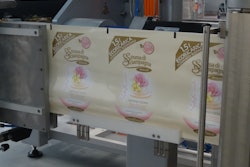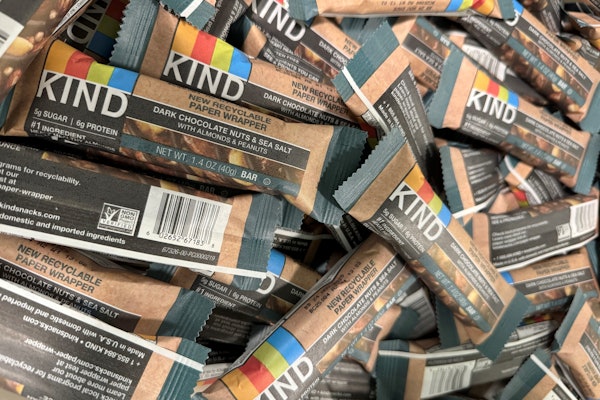You now have a choice between two reliable and time-tested pouch-filling methods: You can make the packaging in your facility, or utilize premade bags. Here are some factors to guide your choice:
1. Get educated about the fundamentals. Form/fill/seal, whether horizontal or vertical, is dedicated. It is capable of considerably higher volumes and faster speeds, with a lower cost per bag. However, it requires the packager to become his own bag maker, ordering rollstock, dealing with scrap, etc. Not every operation is set up for that method. Premade bags offer a lower cost of entry, and are made by experts in bag-making technology that can constantly invest in new technology, equipment, and materials. They also offer some styles of bags (stand-up, gusseted, etc.) that are not readily available with f/f/s. However, the packager does not have as much control over construction of the bags when they are bought premade. Keep in mind that a pouch-filling machine needs a full-time operator to load the pouches, whereas on the f/f/s machine, the operator can focus on other things while the reel of
film runs.
2. Consider a shortcut calculation. For some packagers, a shortcut calculation takes volume into consideration. Overall volume below a certain number of units per year indicates that it makes more sense to use premade pouches—the volume number can be anything from several hundred thousand units per year, to 1 million or more. If you cannot predict robust growth, the payback may be very long for a f/f/s system.
3. How many different pouch styles? If you will be making many different pouch sizes, shapes, or styles and need to change over a number of times in the same day, the premade pouch machine (PMP) is probably better suited for the flexibility you require. If you have longer runs and higher output, and only one-to-four different sizes or styles, the f/f/s is the better option. Rollstock for f/f/s is inventory that can be used for multiple bag sizes, etc., whereas using premade bags can potentially leave you with a lot of inventory for a discontinued product.
4. Take into account product shapes, sizes, and variability. Rollstock can be an ideal choice if there is a consistent size and shape of product, such as, for example, uniform blocks of cheese. Because premade bags can shrink to adapt to nonuniform sizes, they are more adaptable to a more variably shaped product, such as a tri-tip roast.
5. Prepare to deal with the scrap. Scrap is a greater concern when using rollstock and making packaging on-site compared to premade products, since excess material is concentrated in the facility where the bags are manufactured. A horizontal f/f/s machine can typically have scrap rates in the 1% to 3% range, yet run at high operating efficiencies of 94% to 98%. Packagers do not have to deal with scrap with premade bags, but obviously the cost of dealing with the scrap is built into the price you pay for the bags.
6. Don’t neglect the FAT. Factory acceptance testing (FAT), which is not as important with premade bags, is extremely important for f/f/s. Both sides should discuss in advance what will be accomplished during the FAT.
(See "Roadmap for a successful form/fill/seal Factory Acceptance Test".) In both the PMP and hf/f/s cases, the quality of the pouch material is important for good efficiency, and consistent machine maintenance and operator training is key to success. Ultimately, you will need to review the combination of capital equipment cost, pouch material cost, number of pouch formats, and your expected annual output, and run the numbers to calculate the expected payback and return on your investment.
Liked this article? Download the entire playbook here.

























